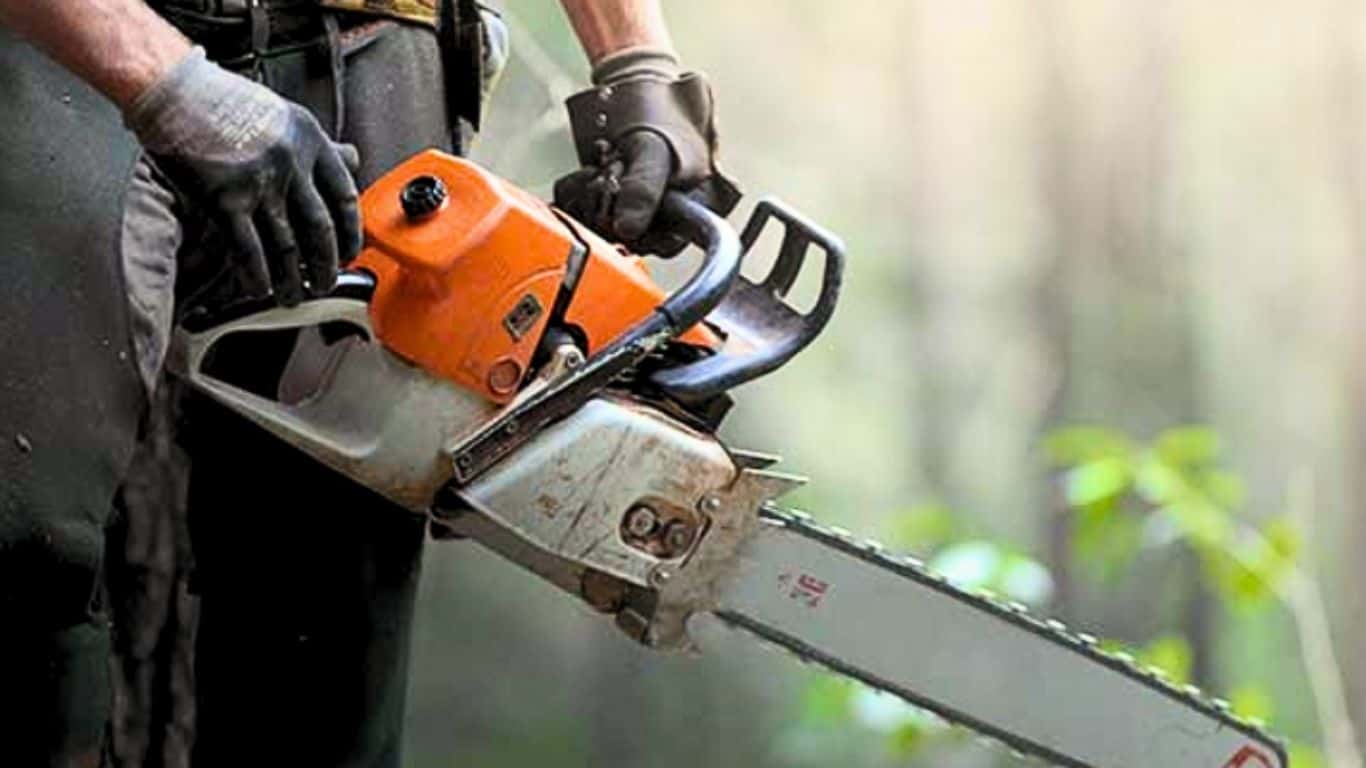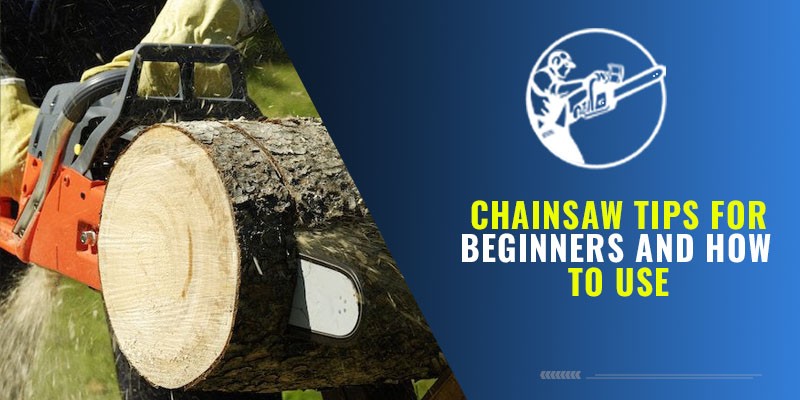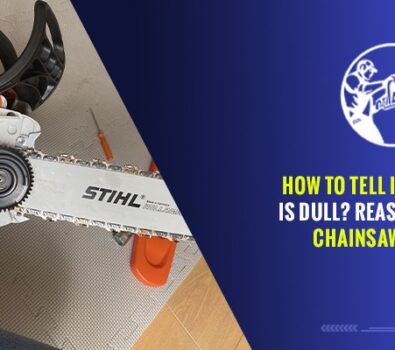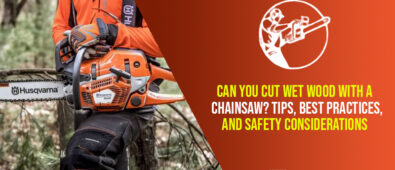Chainsaws are powerful tools that can make tree cutting and limb removal much easier and faster. However, they are also dangerous and require certain knowledge and skill to operate safely. In this article, we will provide some chainsaw tips for beginners to help them use this tool safely and effectively. You can also read our article on how a chainsaw works.
Chainsaw Guide
Chainsaws can make yard work and tree maintenance a breeze. However, if used improperly, they can be extremely dangerous. If you’re a beginner to using a chainsaw, it’s important to understand the proper safety precautions and tips for using this tool. We’ll cover the basics of chainsaw safety and provide some tips to help you get started.
1. Wear Proper Safety Gear
Before you even pick up a chainsaw, it’s important to wear the proper safety gear. This includes a helmet with face and ear protection, gloves, eye protection, and boots with slip-resistant soles. Never operate a chainsaw in sandals or flip-flops. You should also avoid wearing loose clothing that could get caught in the chainsaw.
2. Familiarize Yourself with the Chainsaw
Before you start using the chainsaw, take some time to familiarize yourself with the tool. Read the owner’s manual and understand how to properly create and stop the chainsaw. Make sure you understand how to adjust the chain tension, and how to properly lubricate the chain.

3. Practice Cutting Techniques
It’s important to practice cutting techniques before you start using the chainsaw on trees or branches. Find a safe and clear area and practice cutting straight lines and curves. You should also practice making plunge cuts and cutting at different angles. This will help you become more comfortable with the chainsaw and improve your cutting accuracy.
4. Maintain a Safe Working Environment
Before you start using the chainsaw, make sure the working environment is safe. Clear away any obstacles or debris that could cause you to trip or slip. Keep bystanders and pets at a safe distance. Make sure the chainsaw is properly lubricated and maintained before each use.
5. Know Your Limits
As a beginner, it’s important to know your limits. Don’t attempt to cut down large trees or branches beyond your skill level. Start with smaller projects and work your way up as you become more experienced. If you’re unsure about a job, consider hiring a professional tree service.
6. Don’t Cut Above Shoulder Height
Never cut above shoulder height with a chainsaw. This can cause the chainsaw to kick back and potentially injure you. Instead, use a ladder or pole saw to reach higher branches.
7. Always Use Two Hands
When operating a chainsaw, it’s important to always use two hands. This will provide you with better control and reduce the risk of injury. Keep your left hand on the front handle and your right hand on the rear handle.

8. Keep the Chain Sharp
A sharp chain is essential for safe and efficient chainsaw use. Make sure to sharpen the chain regularly to ensure it’s cutting properly. A dull chain can cause the chainsaw to kick back or become stuck in the wood.
Chainsaw Cutting Techniques
Before using a chainsaw, learning some basic cutting techniques is important. The two most common types of cuts are the crosscut and the rip cut.
Crosscut: A crosscut is when you cut across the grain of the wood, while a rip cut is when you cut along the grain of the wood. To make a crosscut, place the chainsaw bar on the wood at a slight angle and cut through the wood with a smooth, steady motion. Make sure the chainsaw is perpendicular to the wood and that you maintain a firm grip on the saw while cutting.
Rip Cut: For a rip cut, position the chainsaw bar parallel to the wood and cut through it in a straight line. Again, make sure the chainsaw is held firmly and that you maintain a consistent cutting angle.
How to Use a Chainsaw to Cut Down a Tree
Cutting down a tree with a chainsaw requires careful planning and execution to ensure the safety of everyone involved. Here are the steps to follow when using a chainsaw to cut down a tree:
- Assess the tree and the area around it: Look for any hazards such as power lines, buildings, or other obstacles that could interfere with the tree falling safely. Plan your escape route in case the tree falls in an unexpected direction.
- Make a notch: Use a chainsaw to cut a V-shaped notch in the side of the tree where you want it to fall. This notch should be about one-third of the diameter of the tree.
- Make a felling cut: Stand on the opposite side of the tree from the notch and use the chainsaw to cut straight through the trunk. This cut should be slightly above the notch and should be at a level that will cause the tree to fall in the desired direction.
- Get out of the way: As the tree begins to fall, move quickly to a safe location.
Chainsaw Kickback
One of the biggest dangers of using a chainsaw is kickback, which is when the chainsaw bar suddenly and violently jumps back toward the operator. This can happen if the chainsaw hits a knot in the wood, or if the tip of the chainsaw bar touches something while cutting.
To avoid kickback, always keep the chainsaw bar parallel to the ground and avoid cutting with the tip of the bar. Make sure the chain is properly sharpened and tensioned, and use the appropriate chain for the size and type of chainsaw you are using. Finally, always wear the proper safety equipment, including a helmet, eye and ear protection, and gloves.
Using an Electric Chainsaw for the First Time
Electric chainsaws are generally easier to use than gas-powered chainsaws, but they still require careful handling. Here are some tips for using an electric chainsaw for the first time:
- Read the manual: Before using the chainsaw, read the instruction manual thoroughly and familiarize yourself with the controls and safety features.
- Check the chain tension: Make sure the chain is properly tensioned and lubricated before use.
- Start the chainsaw: Plug in the chainsaw and press the trigger to start it. Allow the motor to reach full speed before beginning to cut.
- Cut with care: Use the appropriate cutting techniques and always keep both hands on the saw.
Some important Chainsaw Maintenance Tips
Proper maintenance of a chainsaw is essential to ensure its safe and efficient operation. Here are some tips for maintaining your chainsaw:
- Clean the saw regularly: After each use, clean the saw thoroughly using a soft-bristled brush or compressed air to remove sawdust and debris.
- Check the chain tension: Check the tension of the chain before each use. A loose chain can cause kickback, while an overly tight chain can cause excessive wear.
- Lubricate the bar and chain: Keep the chain lubricated with bar oil, which helps to reduce friction and prolong the life of the chain and bar. Make sure the oil level is sufficient before each use. Read our article on why is my chainsaw leaking bar oil.
- Sharpen the chain regularly: A dull chain can cause the saw to work harder, increasing the risk of kickback. Sharpen the chain every time you refuel or at least every few hours of use.
- Check the air filter: The air filter needs to be cleaned regularly to prevent the engine from overheating. Clean the filter every few hours of use or whenever it appears dirty.
- Inspect the spark plug: Check the spark plug regularly and replace it if it is damaged or worn. A damaged spark plug can cause the saw to run poorly or not start at all.
- Store the saw properly: Store the saw in a dry place away from moisture and dust. Empty the fuel tank and remove the chain and bar when storing the saw for an extended period.
Following these maintenance tips will help ensure your chainsaw operates safely and efficiently for years to come.
Chainsaw Tips For Beginners – FAQs
Conclusion
In conclusion, using a chainsaw can be a safe and effective tool when proper safety precautions and techniques are followed. Remember to wear the proper safety gear, practice cutting techniques, maintain a safe working environment, know your limits, always use two hands, don’t cut above shoulder height, and keep the chain sharp. By following these tips, you can safely and effectively use a chainsaw for your tree and yard maintenance needs.




